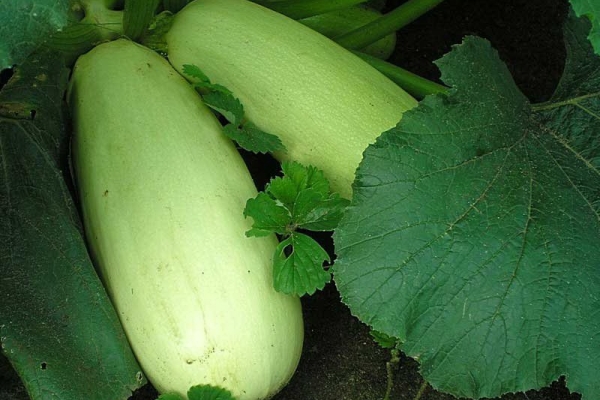Zucchini Gribovsky belongs to the mid-early varieties courgettes. Its light-white fruits became popular with gardeners in Russia because of the excellent taste, unpretentiousness in the care and resistance to various diseases.
Table of contents
Description and characteristics of the variety Gribovsky
Variety Gribovsky belongs to the medium early high-yielding varieties of zucchini. From sowing seeds to full maturity takes about 2 months.
The shrub is well developed, with medium branching. The leaf is attached to the trunk with a 32 cm stem. It has a pentagonal shape and rich green color.
According to the description fruits of the Gribovsky variety are shaped like a cylinder, white or light green, reach a length of 20 cm. The flesh is light colored with an average density.
The variety is used in canning and for cooking fried and stews. The average weight of ripe fruit is up to 1.5 kg.
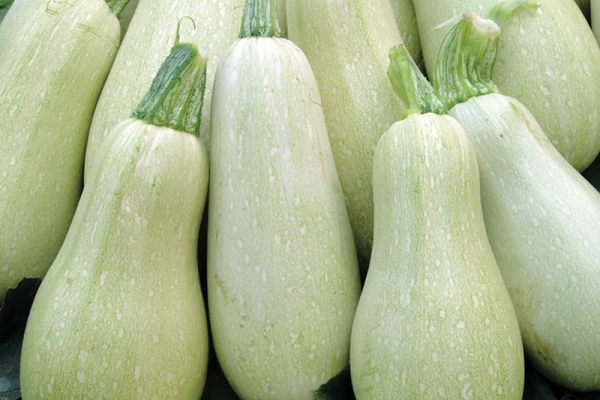
Advantages and disadvantages
The advantages include:
- Variety resistant to climate change.
- Easily tolerates minor frosts.
- It has good taste and decent appearance.
- The variety is suitable for cooking fried, stews, and for preservation.
- Gribovsky - high-yielding variety.
- It is immune to many diseases.
The disadvantages include fast re-maturity.
Preparation and planting technology of zucchini seeds
Squashes varieties Gribovsky can be grown and seedling method, and seeds directly into the ground.
In order to grow healthy seedlings, prepared seeds are planted in separate peat pots with moist, nutritious soil, deepening them by 3-5 cm.
For early harvest, seedlings planted in the last days of April.

After the appearance of the first shoots, the seedlings are fed with mineral fertilizers. Subsequent feeding is carried out after 10 days.
Watering shoots better with warm water., cold watering stops the growth of seedlings. Young plants are planted in a permanent place, with the formation of three full sheets. In the prepared hole, the plant is planted to the cotyledon leaves.
In the open ground, the prepared seeds are sown in the last days of May and early June.after the earth warms to 13-15 degrees.
Landing scheme 70x70. To get a generous harvest, it is necessary to plant the seeds to stand a few days under the covering material. When shoots appear and at the end of possible frosts, the film is removed.

Soil preparation
For a rich harvest, beds must be prepared in the autumn. To do this, they dig up the earth on the bayonet of a shovel, apply organic fertilizer (manure, compost) and cover it with a dark material for quick rotting.
The beds must be prepared in a sunny, draughty place. The soil for good growth should be nutritious, neutral, sandy or medium loamy.
Squashes do not grow well on heavy soils with a close location of groundwater.
Zucchini - heat-loving culture, tolerates slight drying, loves a lot of light and fertile soil. If all the conditions are created, the Gribovsky zucchini varieties will be pleased with a generous harvest.
When water stagnates, the top of the fruit begins to rot. To preserve the harvest, the damaged area is cut with a sharp knife, and the cut must be held over an open fire. The cut is hardened, crusted, and the fruit continues to grow.
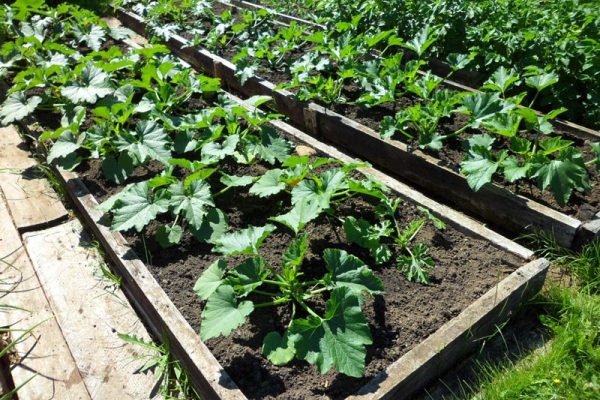
Six rules of care
Caring for a variety Gribovsky is no different from caring for other varieties.
For a good and healthy harvest you need:
- Produce weeding.
- Interrow loosening. Loosening the bush is done very carefully, as the root system of the zucchini is superficial and vulnerable.
- Thinning when sowing seeds in open ground.
- Regular harvest. With the overgrowing of fruits, the bush is depleted, its development slows down and the formation of ovaries stops.
- Productivity depends on insect pollinators. For attraction it is necessary process the flowers with a solution of sugar, boric acid and water or set on a bed a plate with honey solution.
- During the whole growing season the plant needs a bait.
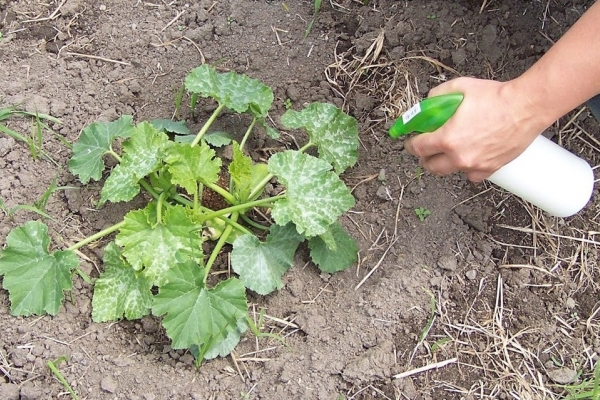
Diseases, pests and prevention
Zucchini varieties Gribovsky are immune to many diseases, but no one is immune from common insects.
When detecting the first signs of plant damage, it is necessary to take the first disposal measures.
Spider mite
You can find it on the bottom surface of the sheet. The mite gradually sucks the cell sap, and the plant begins to dry out, throw off flowers and ovaries.
The fight is to spraying plants onion and garlic peel extract at the rate of 200 grams per 10 liters of water. Also effective will be the treatment of the bush with insecticides.
Gourd Aphid
Pests tend to attack young plants. The main habitat of aphids is the underside of the leaf. The growth of the zucchini is suspended, the leaves curl, the flowers fall.
With no assistance, the plant dies. Treatment - insecticide spraying.
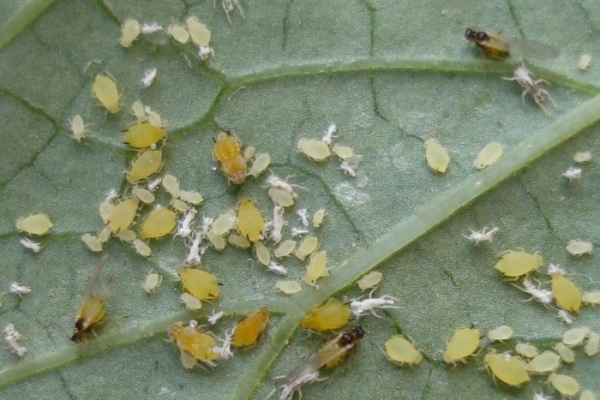
Sprout fly
The fly lays eggs under an earthy lump, with the arrival of warm days the larvae hatch and penetrate deep into the young stalk. Shoots dry out and die.
Control measures: use of insecticides, after harvesting - a deep digging of the earth and the destruction of the remaining plants.
Of the common diseases, the Gribovsky variety can be affected:
- powdery mildew - affects the stems and leaves, forming a white bloom on them;
- antrocnosis - the stem is covered with moist spots;
- gray rot - Flowers, peduncles and ovaries fall ill. The rot forms a gray patina with a mucous coating.
Preventive measures against pests and diseases:
- The alternation of planting on the site.
- Timely cleaning and disposal of infected plants.
- Autumn preparation beds.

Harvesting and Storage
Because zucchini quickly outgrow, they must be removed after the formation of ovaries for 8-12 days. During this period, the Gribovsky variety has a light, tender and soft skin.
Since the variety is mid-season, fruits ripen two months after planting seeds.
Vegetables must be harvested before the first frost., pruning it from the bush with a sharp knife, together with the stem.
Cut the vegetables dried in the sun, wipe with a dry cloth and sent to storage in the basement, putting them in the boxes laid with straw. It is necessary to ensure that the fruits do not come into contact with each other.
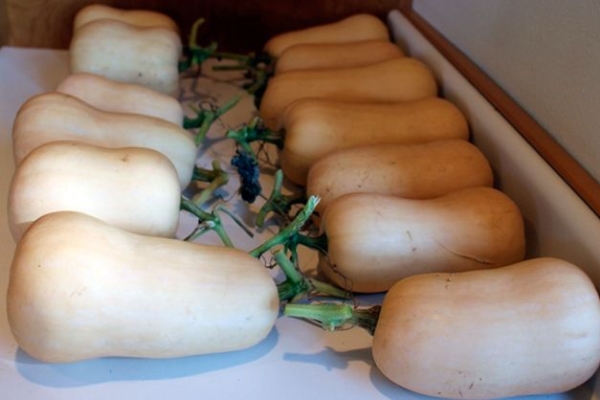
Also zucchini preserve its nutritional properties and frozen. In order for frozen vegetables to be preserved for the winter, you need:
- collect ripe fruit without visible damage;
- rinse thoroughly and peel the fruit;
- remove seeds and pulp;
- cut into small cubes or cubes;
- portions packaged in packages and put into the freezer.
Even the beginning gardeners grow up the Gribovsky zucchini, as this variety gives a rich and tasty harvest.
The main thing for zucchini is to follow the rules of growing a culture., seed preparation for planting and timely harvesting.
The collected fruits are stored for a long time, without losing their useful properties.
